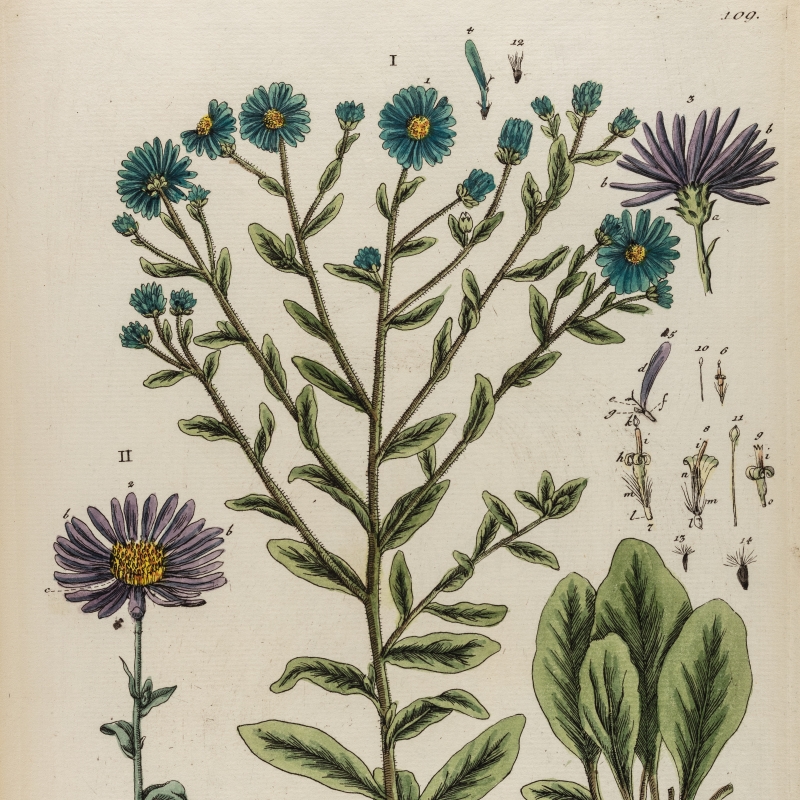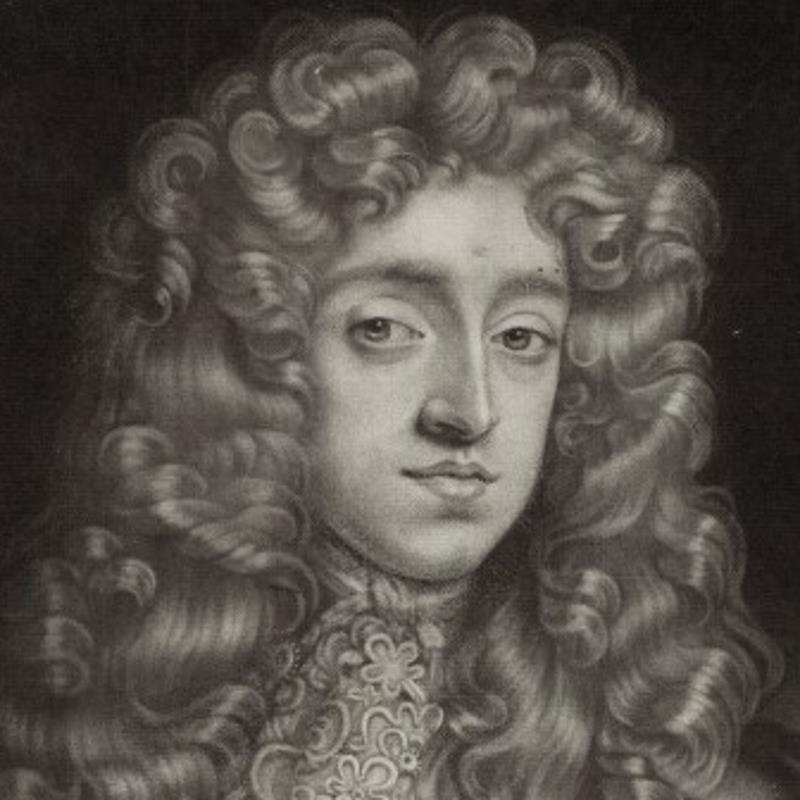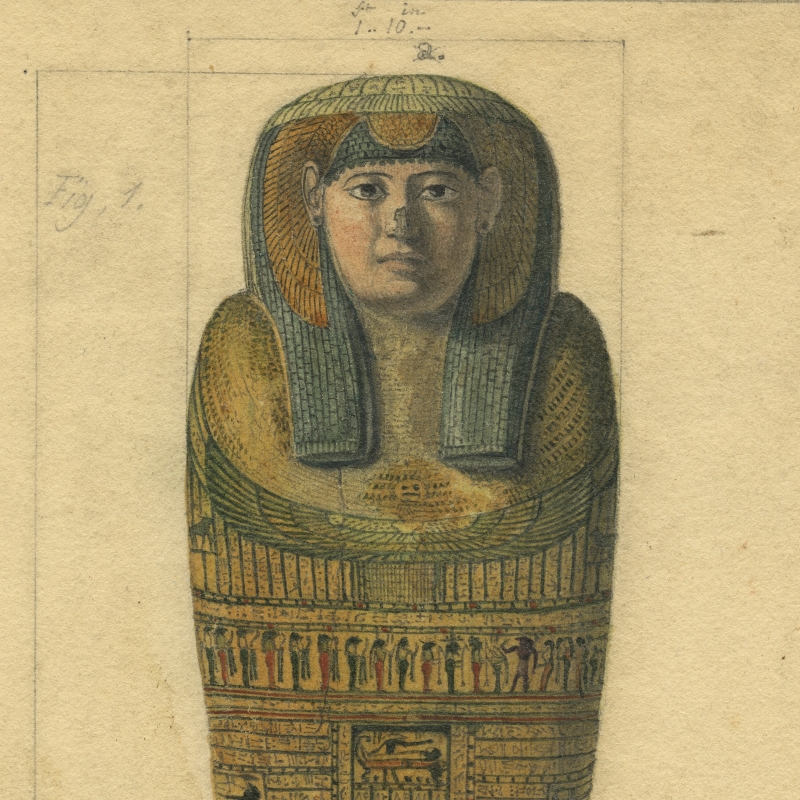Keith Moore finds pteranodons and some truly prehistoric poetry while cataloguing the Royal Society's exhibition programmes.

I’m catching up with some archival cataloguing at the moment, beginning with programmes for the Royal Society’s conversazioni (the forerunners of today’s Summer Science Exhibition). In the course of doing that, I’m adding to my stock of fascinating (but useless) facts and I’ve found one genuine literary horror. Which isn’t the purpose of the work, of course, but when scientists attempt to be poets, there’s only one thing to do – share it with the world.
There are many good reasons for recording the exhibits and exhibitors at the Society’s annual displays, not least that it’s the subject of a mini-project we’re completing in AHRC-partnership with Lancaster University. From 1872, there were very detailed programmes for the Burlington House-based entertainments – these were the Royal Society’s equivalent of our sister-Royal Academy’s summer exhibitions of paintings. Surprisingly, the scientific soirees are little-studied. There are big questions to answer on how influential the exhibitions were and what the Society’s Fellows intended to achieve by them – we’ll get around to that of course, but it’s the little things you learn along the way that are most fun.
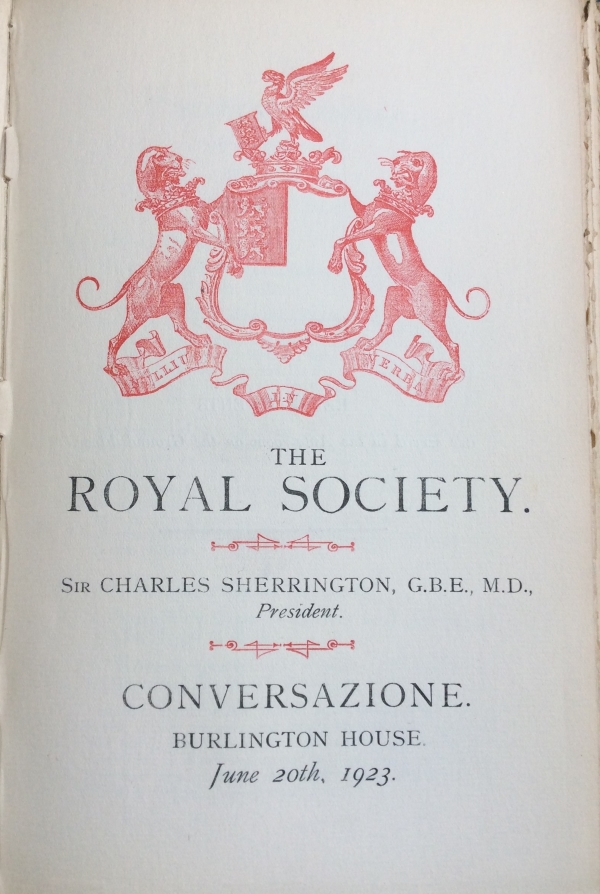
Royal Society conversazione programme from June 1923
Who could have predicted, for example, that by checking biographies of the exhibitors for 1903, I would come across the only Fellow of the Royal Society to have played in an FA Cup Final? (the chemist Harold Baily Dixon, in 1873). Or that the exhibition catalogues would furnish a wealth of provenance detail, since much of the material culture shown would find a permanent home in national collections, including the Society’s own. It is useful to know, for example, that a familiar image of James Prescott Joule FRS (1818-1889), taken by Lady Lucy Roscoe in around 1876, was considered to be the only photographic portrait of the great physicist when it was displayed in June 1923.
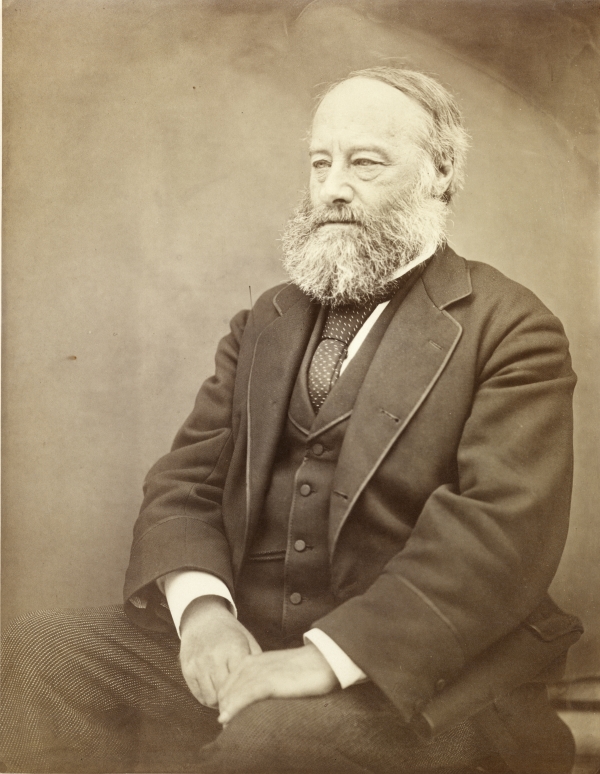
James Prescott Joule, by Lucy Roscoe (née Potter), c.1876
Earlier exhibitions in the series tended to draw upon the work of individual scientists – but also contemporary arts, craftsmanship and manufacturing. Part of their charm lies in the eclectic mix of objects on show, anything from ancient Egyptian jewelry to regular displays of live marine life from Plymouth Sound. By the mid-1920s, the conversazione programmes were becoming dominated by institutional exhibitors: either research organisations such as the National Physical Laboratory, university departments, or corporations, including the Western Electric Company.
I suppose it’s a sign of the times we live in that I was immediately alert to the post-WWI entries describing efforts to prevent infection. The experience of observing illness and wound treatment in the trenches led to several conversazione exhibits on pre-penicillin work by Alexander Fleming FRS (1881-1955), describing antiseptic treatments and the action of lysozyme. But I was more surprised by the biography of an earlier exhibitor, the mathematician L.N.G. Filon FRS (1875-1937), who died in a later wave of infection. That was the 1937 mini-typhoid epidemic in Croydon, Surrey, very close to where I live. The origin of the incident, which resulted in 43 deaths, was eventually traced to one individual working in a water supply well in Addington, and who had been an asymptomatic disease carrier since the First World War.
But I promised poetry. The 1909 Royal Society conversazioni were graced by original drawings of dinosaur reconstructions by Alice Bolingbroke Woodward (1862-1951), now recognized as a leading children’s illustrator, but one with genuine palaeontological interests. The artworks were exhibited by Henry Knipe (1855-1918), author of Nebula to Man (1905) and Evolution in the past (1912). The drawings tempted me into the volumes, but on opening Nebula to man I wasn’t prepared for over two hundred pages of rhyming couplets outlining the history of life on Earth by geological period.I wouldn’t recommend that you read it all, since the pace is – well, glacial – but perhaps you should try a sample from the Jurassic that unaccountably didn’t make it into a Steven Spielberg script:
Small headed are these Brontosaurs, since named,
Although in trunk and limb they huge are framed.
Quite simple are their tastes. The trees and plants
Afford them all they need for sustenance.
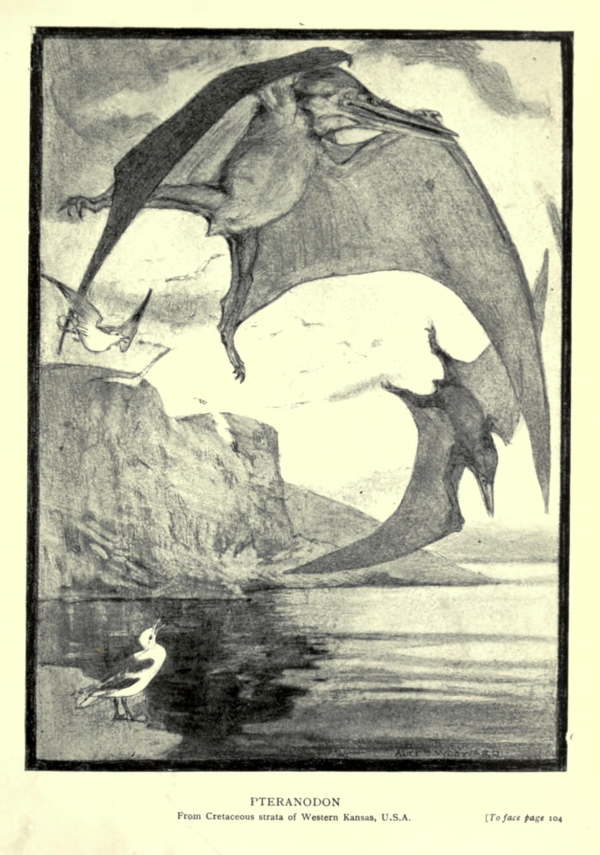 'Pteranodon', by Alice Bolingbroke Woodward, from Henry Knipe's 'Evolution in the past' (1912) - Wikimedia Commons
'Pteranodon', by Alice Bolingbroke Woodward, from Henry Knipe's 'Evolution in the past' (1912) - Wikimedia Commons
Remarkably, Knipe wasn’t the only prehistorian-poet to exhibit at the Royal Society. The archaeologist Nina Layard (1853-1935) displayed field excavation finds on several occasions in the early twentieth century, most likely encouraged by the Society’s long-serving Treasurer, Sir John Evans. Layard’s life is interesting in several respects – she was among the first women to be elected to professional societies (both the Antiquaries and the Linnaean) and did genuinely important paleontology around Ipswich (exhibited at the Royal Society in 1920). Layard spent much of her life with her female companion, the author and illustrator Mary Outram, and was herself an uneven, but sometimes interesting, poet. Her collections of Poems (1890) and I and myself and other poems (1893) have at least some merit.
Meanwhile, in the hope of an Ancient Mariner-style lockdown reading of Henry Knipe’s epic (come on Iggy Pop, you know you want to), I have to say that things are getting exciting in the interglacial periods:
More nervous strength than brute life can command
Now plays a part upon this western land
For here has wandered Nature’s latest birth,
The crown and glory of her work on earth.
Primeval men are now upon the scene,
Short, thick-boned hairy beings of savage mien,
With ape-like skulls: but yet endowed with pride
And power of mind to lower brutes denied.
Let’s hope we make it to the next one.


